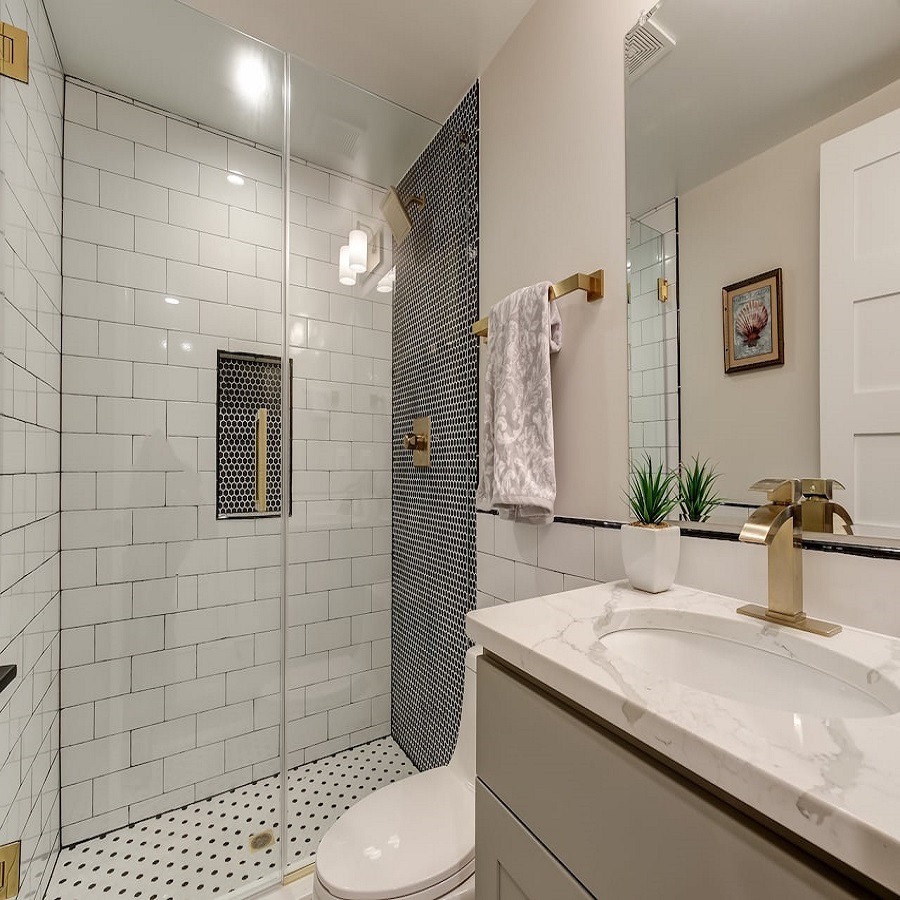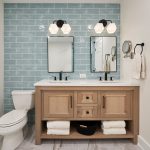Introduction to Bathroom Remodel Costs
Embarking on a bathroom remodel can be exciting. It’s a chance to tailor your space to your needs and tastes. However, budgeting is crucial. A well-planned budget ensures your project stays on track. The cost to remodel a bathroom varies widely. Why? Because it depends on many factors. These include the bathroom’s size, the materials you choose, and the labor cost to remodel the bathroom.
Understanding the financial aspect is key before you start. It lays the groundwork for a smooth renovation process. This guide will help you grasp the basics. We’ll explore the labor cost to remodel bathroom spaces. We’ll also look at materials and other expenses. Our goal? To help you create a bathroom you love, without breaking the bank.
In this journey through costs and budgets, we’ll address key elements. You’ll learn how to navigate the waters of bathroom remodeling expenses. We’ve got you covered, from initial considerations to final touches. So, let’s dive into the world of bathroom remodel costs together. It’s time to turn your dream bathroom into a reality, with a clear eye on the budget.
Key Factors That Impact Bathroom Remodeling Expenses
Several key factors can affect the total expense of a bathroom remodel. Understanding these factors helps to form a realistic budget.
Size and Layout of the Bathroom
The bathroom’s size and layout play a crucial role in remodeling costs. Larger bathrooms require more materials and labor. Changing the layout may involve plumbing and electrical work. These can significantly increase costs.
Quality of Materials
The materials you select can impact your budget greatly. High-end finishes and fixtures cost more. Yet, they can offer better durability and aesthetic appeal. Opting for mid-range or budget materials can lower costs.
Complexity of the Design
Intricate designs demand more labor and detail. They often require specialized skills. Simpler designs can be more cost-effective and take less time to complete.
Labor Costs
The labor cost to remodel bathroom spaces varies by location and contractor. Skilled labor generally costs more. Yet it can ensure higher quality work. Always consider the balance between cost and expertise.
Permits and Regulations
Permits may be necessary for structural or plumbing changes. They ensure safety and compliance with local laws. The cost for permits can vary. Sometimes they add a considerable amount to the overall budget.
Additional Features
Including features like heated floors or custom cabinetry can raise the price. These luxuries add comfort and value. Still, they must fit within the budget.
These factors must be weighed carefully. They all contribute to the total cost of a bathroom remodel. Plan for them in your budget to avoid surprises.
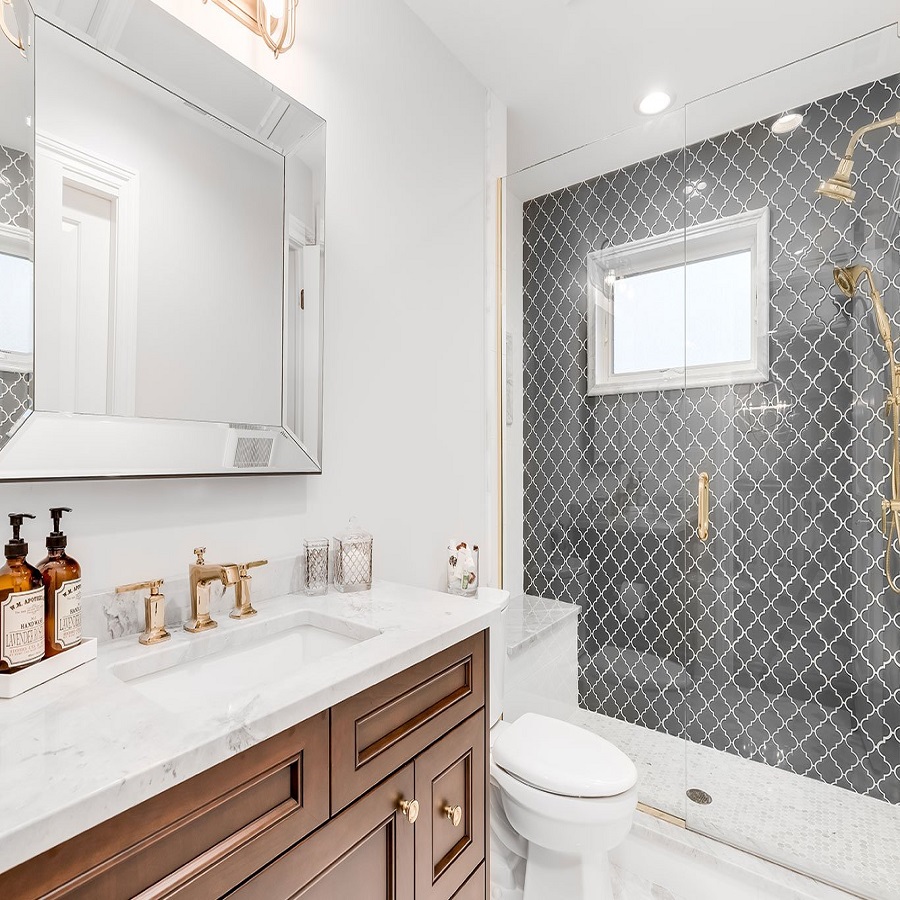
Cost Breakdown of Bathroom Remodeling Projects
To understand where your money goes in a bathroom remodel, let’s break down the costs. These projects have several components. Each makes up a piece of the total budget. Here’s what you need to consider:
Labor Costs
The labor cost to remodel bathroom spaces might take up a large chunk. It can range from 40% to 60% of your total budget. This includes fees for plumbers, electricians, and other professionals.
Materials
Material costs will fluctuate. They depend on what you choose. Tiles, countertops, and fixtures can vary from budget-friendly to high-end choices.
Design Fees
If you hire a designer, their fees will add to the cost. A good design can make the most of your space and budget.
Permits and Testing
Permits, inspections, and any needed testing ensure your remodel meets local codes. These have fees attached.
Fixtures and Features
Think about sinks, tubs, and toilets. Quality fixtures are a good investment.
Finishing Touches
Paint, trim work, and lighting can transform your space. Don’t overlook these details.
Budget wisely, and you can allocate funds where they matter most to you. With smart choices, you can manage a successful bathroom remodel. Keep labor cost to remodel bathroom and other expenses in mind as you plan.
How to Budget for Your Bathroom Remodel
Crafting a budget for a bathroom remodel requires careful planning and consideration. Start by assessing your finances to determine how much you can afford to spend without putting undue strain on your financial health. Next, prioritize the changes you want to make, focusing on those that add value or significantly improve the quality of the bathroom. Here is a step-by-step guide to help you structure your bathroom remodel budget effectively:
Set a Clear Remodeling Goal
Identify what you want to achieve with your remodel. Is it to update the look, increase functionality, or add value to your home? Your goal will steer your budget decisions.
Create a Wishlist vs. Needs List
Separate your wants and needs. List essential items that need upgrading and wishlist items that you desire if the budget allows.
Research Average Remodel Costs
Look up the average cost for bathroom remodels in your area. This will give you a benchmark for what to expect in terms of spending.
Factor in the Labor Cost to Remodel Bathroom
Remember that labor can be a significant portion of the expense. Get estimates from contractors to know what portion of your budget will go toward labor.
Allocate Extra for Materials
Decide on the quality of materials you wish to use. Keep in mind that you often get what you pay for, so invest in materials that offer balance between cost and quality.
Save for Surprises
Unexpected costs can arise during a remodel. It’s wise to set aside 10-15% of your budget for unforeseen expenses.
Keep Your Budget Updated
As you get quotes and make decisions, continually update your budget. This will ensure you stay on track and can make adjustments where needed.
By following these steps, you can create a clear and considered budget. This will help guide your spending throughout the remodeling process. With careful planning, you can achieve the bathroom of your dreams while keeping your finances in check.
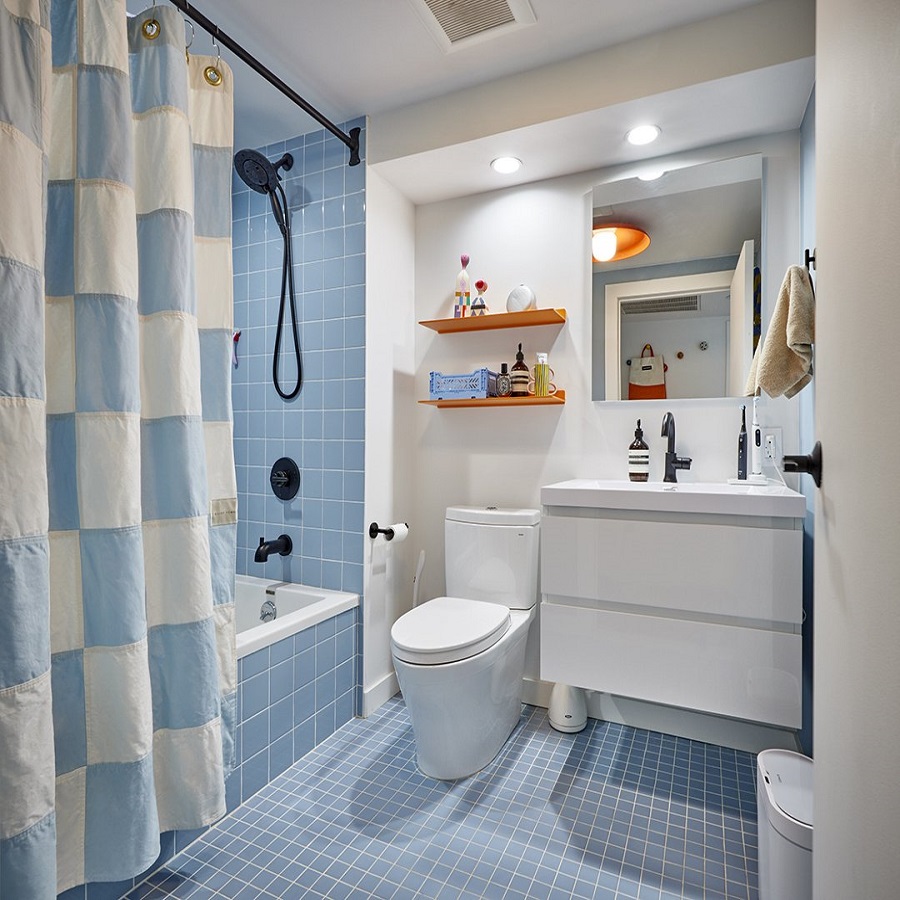
Tips for Minimizing Bathroom Remodel Costs
Minimizing costs is key to a successful bathroom remodel on a budget. Here are effective tips to keep your expenses low:
Compare Contractor Quotes
Don’t settle on the first quote you get. Ask multiple contractors for estimates. Compare the labor cost to remodel bathroom in each quote. Then choose the best value.
Do Some Work Yourself
Consider doing simple tasks on your own. Painting or installing hardware can save money. Only tackle tasks within your skill set to avoid costly mistakes.
Shop Deals and Discounts
Look for sales on tiles, fixtures, and materials. Buying off-season or clearance items can lower costs. Remember to check for quality.
Reuse When Possible
Recycle items that are still in good shape. Keeping your current tub or sink can cut costs. Update them instead of replacing them.
Simplify Your Design
Choose a simple but stylish design. Complex designs can increase labor and material costs. A minimalist approach can be both modern and cost-effective.
Avoid Structural Changes
Avoid moving plumbing or walls if you can. Structural changes often lead to higher costs. Work with the existing layout to save money.
Prioritize Spending
Decide what matters most to you. Put your money into those features. Cut back on less important aspects.
Buy Mid-range Materials
Opt for materials that offer a balance of quality and cost. High-end materials drive up the budget. Mid-range options can still look great but are more affordable.
By following these tips, you can keep your bathroom remodel within budget. Remember, planning and smart choices go a long way in saving money.
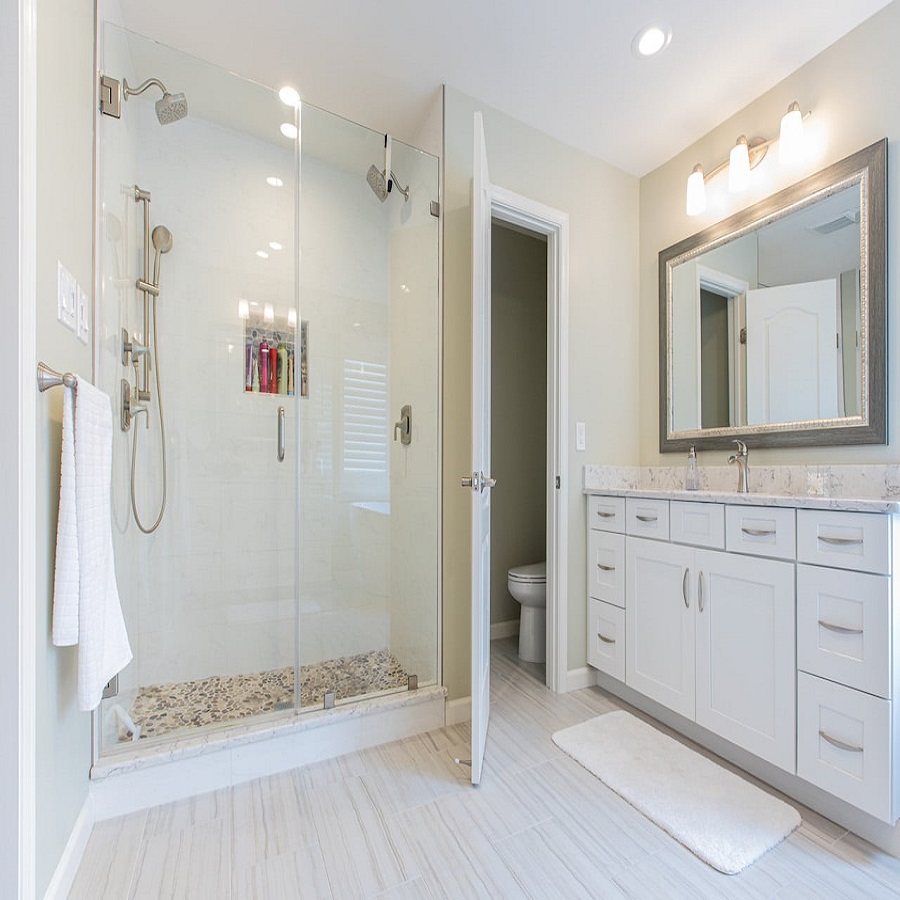
Understanding Labor Costs in Bathroom Renovations
Understanding labor costs is vital when planning a bathroom remodel. Labor can account for a significant portion of your total expenses. The cost will depend on your location, the project’s complexity, and the professionals you hire. Here are key points to consider about labor expenses:
Know the Different Types of Labor Involved
A bathroom renovation requires diverse skills from various professionals. Plumbers, electricians, tilers, and painters are some you might need.
Consider the Timeframe
The longer the project takes, the more you’ll pay in labor. Efficient contractors can save you money by completing the job faster.
Location Affects Rates
Labor costs can vary greatly by region. Urban areas tend to have higher rates than rural locations.
Experience Costs More
Skilled workers charge more, but their expertise can lead to better and quicker results, possibly saving you money in the long run.
Get Multiple Estimates
Always seek several quotes. This will help you find a balance between cost and quality of labor.
Factor in Overhead
Contractors factor their business costs into labor rates. This includes insurance, tools, and transportation.
Prepare for Extra Labor Costs
Sometimes issues arise that need additional work. Set aside funds in case the scope of labor expands.
Labor constitutes a big piece of bathroom renovation budgets. It’s important to understand these costs for a well-rounded budget. Doing so, you can avoid surprises and manage your finances better.
Material Costs: Choosing Quality vs. Affordability
When planning a bathroom remodel, material costs are a big factor. How you choose materials greatly affects your budget. Here’s how to balance quality and affordability:
Opt for Durable Materials That Offer Long-Term Value
Long-lasting materials can save you money over time. They might cost more now, but they won’t need replacing soon. For example, porcelain tiles are a good choice. They are strong and resist wear. Look for such options that promise durability.
Compare Prices from Different Suppliers
Shop around before you buy. Prices can vary widely. Check different stores and online suppliers. You might find the same materials for less. Always look for the best deal without compromising quality.
Consider the Look and Feel You Want to Achieve
The materials you choose shape the room’s look. Want a luxury feel? You might pick natural stone. Going for a modern look? Large format tiles could work. Think about what you need to get the style you want. Remember, costly isn’t always better.
Weigh Costs Against Benefits
Some materials offer great benefits. For example, low-flow toilets save water. This can cut your water bill. They might be pricier upfront. But the long-term savings are worth it. Consider both sides: immediate cost and future benefits.
Use Cost-Effective Alternatives Where Appropriate
You can find materials that mimic high-end looks for less. Vinyl flooring, for instance, can look like wood or stone but is more affordable. Be smart with your choices. Sometimes the less expensive option is just as good.
Don’t Overlook the Impact of Maintenance
Some materials need lots of upkeep. This can cost you more later on. Others are easy to clean and maintain. Think about maintenance when you pick materials. It can lead to savings in the long run.
Materials are where you can really control costs. Choose wisely between quality and affordability. A balance here will help keep your bathroom remodel within budget.
Planning for Unexpected Expenses During Bathroom Remodels
When diving into a bathroom remodel, unexpected costs can surprise you. Planning for these is smart. Here’s how to do it:
Set Aside a Contingency Fund
Create a safety net with a contingency fund. Aim for 10 to 15 percent of your total budget. This fund covers surprises that crop up.
Be Realistic About Potential Issues
Old homes might hide problems like water damage or mold. Know that issues might occur, especially if you have an older home.
